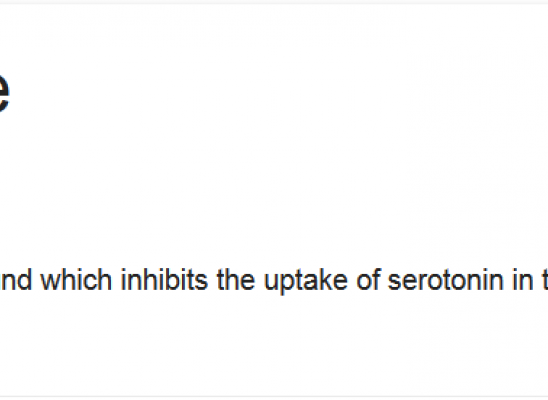Helping Your Partner With Trichotillomania: Love, Respect, and Understanding

Online test
Find out the severity of your symptoms with this free online test
Trichotillomania, commonly referred to as “trich” or hair-pulling, is a mental health condition that can be challenging not only for the person experiencing it but also for their loved ones. Trich is more than just the loss of hair. It’s a disorder that can impact the person, their emotional well-being, and even their relationships.
When you love someone with dealing with hair pulling, it isn’t always easy to know how to support and help. How much is too much? What’s the right thing to say or do? You can’t “fix it” for them, but you can be an important source of love and support. Offering meaningful help requires compassion, understanding, and teamwork. It also requires a respect for your partner’s boundaries. Learning how to understand and support your loved one while respecting their boundaries can strengthen your bond and help you navigate this journey together.
Why Respecting Boundaries Matters
Healthy boundaries are essential to any relationship. They are the “guard rails” – they signal what is ok and not ok in the relationship and help to define expectations. They help to build trust, safety, and respect in relationships.
Without boundaries, relationships can become dysfunctional. A partner can become enmeshed and begin to emotionally caretake the other or take responsibility for things that are not theirs to take responsibility for, often neglecting their own needs. It sets up an unhealthy dynamic for both partners and doesn’t allow each person to be fully responsible for their own issues.
Supporting Your Partner In Healthy Ways
As someone who loves them, your role is not to “fix” your partner or loved one. What you can do is walk alongside them with compassion and understanding.
Educate Yourself
The first step in supporting your partner is to educate yourself about trichotillomania. Learning about trich can help you understand that it is not simply a “bad habit” to be broken, nor is it an issue of willpower or attention-seeking. Trichotillomania is a complex condition influenced by neurological, psychological, and emotional factors. It can be confusing for your loved one as well as for others who may not fully understand the struggle. Online resources, books, and support groups can provide valuable insights. By demonstrating that you’ve taken the time to understand trichotillomania, you’re showing your partner that you care deeply about their well-being.
Create an Open and Judgment-Free Zone
Open communication is vital when supporting your partner. Let them know you’re available to listen without judgment whenever they want to share their thoughts or feelings.
Avoid criticism or ultimatums - First of all, they don’t work and can actually exacerbate the situation. Comments like “You need to stop” or “Your hair will grow back if you’d just stop” are hurtful and counterproductive. Worse, they can deepen your partner’s sense of shame and create emotional distance between you. They need to feel safe knowing you won’t judge or reject them.
Practice active listening – Listen to understand rather to simply respond. What is your partner trying to share? Listen without interrupting, advising, or trying to “fix” something. Sometimes, they might just need a place to vent or say something out loud.
Validate their emotions – There is no “right or wrong” way to feel, and it’s perfectly ok if you don’t feel the same as your partner. However, it’s important not to negate or minimize their feelings. For example, instead of saying, “You shouldn’t feel that way”, try saying something like, “I can see how frustrating this must be for you” or simply, “I hear you” (three of the most powerful words you can say to someone struggling).
Understand and Respect Their Triggers
Most people with trich have specific triggers that lead to hair pulling, such as stress, boredom, or sensory urges. Work with your partner to identify these triggers and discuss ways you can help. For example, if stress is a significant factor, offer to work together to find ways to add calming rituals into the day like taking an evening walk.
The key here is to be mindful of partnering rather than directing or controlling the situation. Remember, it is your partner’s responsibility to manage their trich in the way that is best for them. Your role is to support and be respectful of their autonomy.
Explore Strategies Together
From fidget toys to apps to treatment options, there are lots of tools and strategies that can help manage trichotillomania. Exploring these together can strengthen your partnership.
Again, be sure these suggestions come from a place of collaboration rather than control. For instance, you might say, “I heard about this tool that might help; would you like to look into it together?” Be prepared that they may not have interest in or be ready for a particular strategy. That’s ok. Respect the boundary.
Encourage (Don’t Push) Professional Help
Seeking professional help from a mental health professional experienced in BFRBs can be an important step in managing trichotillomania. Cognitive-behavioral therapy (CBT), particularly Habit Reversal Training (HRT), has been shown to be effective for many people.
If your partner hasn’t yet sought professional help, it’s ok to gently suggest it without making them feel pressured. For example, you might say, “I’ve read that therapy can be really helpful for managing trichotillomania. Would you like me to help research therapists or go with you to an appointment?” Then respond accordingly, as always honoring their autonomy.
Celebrate Progress, Not Perfection
Recovery from trich is never a straight path, and more like a long, winding road. Celebrate your partner’s efforts and small victories rather than focusing on setbacks. Make it a point to recognize the victories, no matter how small. Each success builds on the last and even a high five, “great job” or “I’m proud of you” boosts confidence and motivation to keep trying.
We’re A Team
Approaching trichotillomania as a team can strengthen your relationship. Use language that emphasizes teamwork such as, “We’ll get through this together.” Find activities that you can do together focusing on things not trich-related to build that sense of teamwork and togetherness.
Final Thoughts
Helping your partner cope with trichotillomania requires empathy, patience, and collaboration. Remember, your role isn’t to fix or control but to stand by them as a compassionate teammate. Together, you can navigate the challenges of trichotillomania and build a relationship rooted in understanding and mutual care.
References
1. Advice for significant others (Dealing with a TTM sufferer) — Western Suffolk psychological services. (2020, March 16). Western Suffolk Psychological Services. https://www.wsps.info/articles/advice-for-significant-others-dealing-with-a-ttm-sufferer
Online test
Find out the severity of your symptoms with this free online test
Start your journey with TrichStop
Take control of your life and find freedom from hair pulling through professional therapy and evidence-based behavioral techniques.
Start Now



